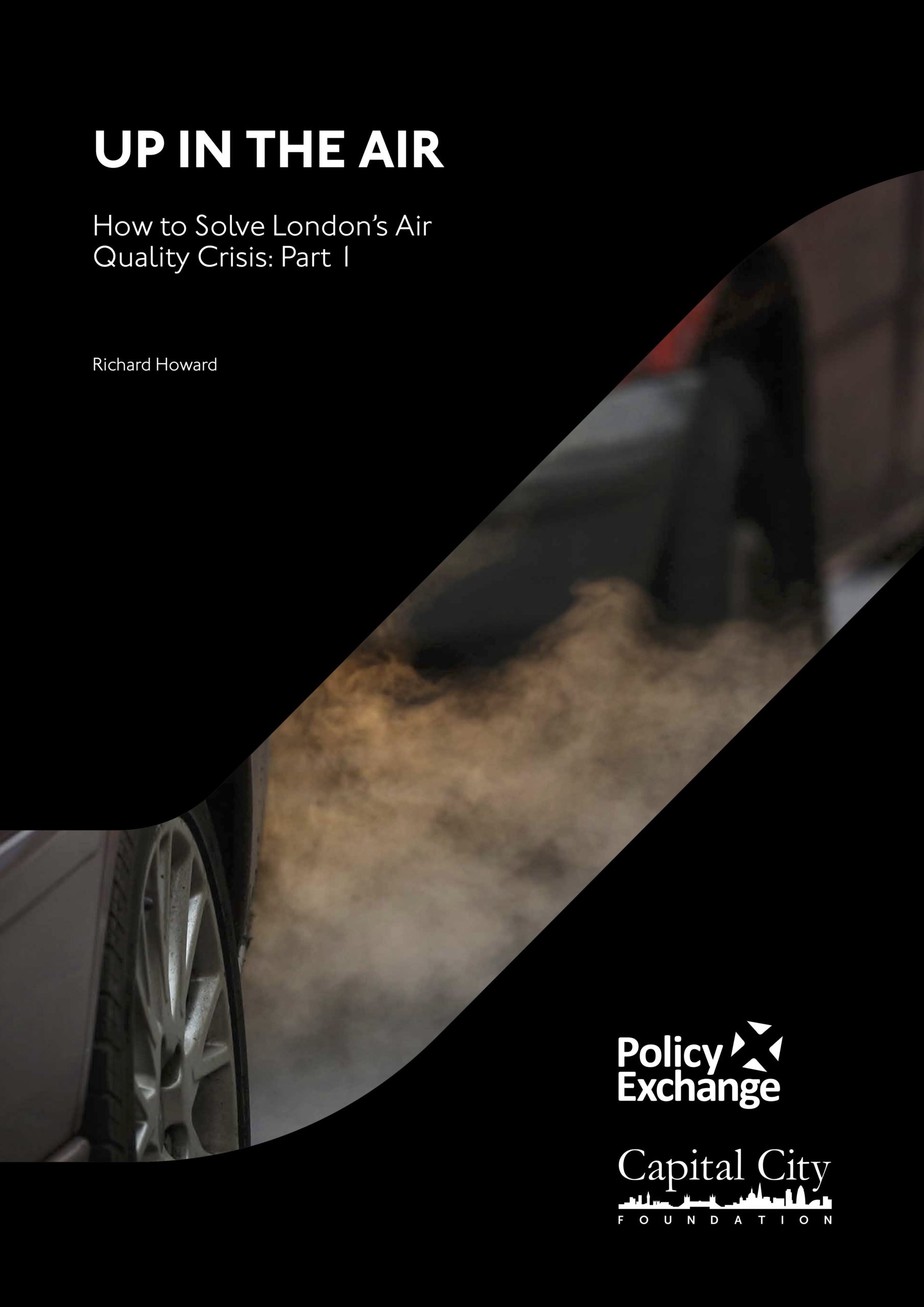
Up In the Air: How to solve London’s air quality crisis – Part 1
Nearly 25% of all school children in London and 44% of the Capital’s workforce are exposed to levels of air pollution that exceed legal and healthy limits.
A new report, Up in the Air, by Policy Exchange’s Capital City Foundation and King’s College London, analyses data from over 100 air quality monitoring sites across London. It shows the most polluted parts of the Capital currently have levels of Nitrogen Dioxide (NO2) nearly four times the legal limit. The research finds that 12.5% of the total area of the Capital currently exceeds the legal limit for NO2, and that deprived parts of London are more likely to be affected.
The report highlights some startling numbers:
- 328,000 school children and 3.8million workers in London are exposed to unhealthy levels of Nitrogen Dioxide which is linked to asthma and respiratory infections.
- 979 out of a total of 3,161 schools in London are over the limit for NO2. The data includes primary and secondary schools, including independent schools.
- Children attending schools in Inner London boroughs such as Westminster, Tower Hamlets, Southwark and Camden are particularly at risk to harmful levels of NO2 pollution.
The report says that while many good initiatives have been put in place to combat poor air quality in the Capital, London’s air pollution problem is still far from being solved.
It puts the failure to control NO2 emissions down to the growth in the number of diesel vehicles, including buses, taxis and diesel cars.
- Diesel cars have systematically failed to match up to emissions standards due to illegal and legal cheating of emissions tests.
- The ongoing growth in decentralised energy across London could also pose a threat to air quality. Gas combustion in buildings could be responsible for 48% of NOx emissions by 2025 in Central London.
New analysis reveals that if improvements in NO2 levels are delivered in full by 2025, then this could lead to an improvement in life expectancy of around six months. However this is in doubt given the slow progress on NO2 pollution to date.

